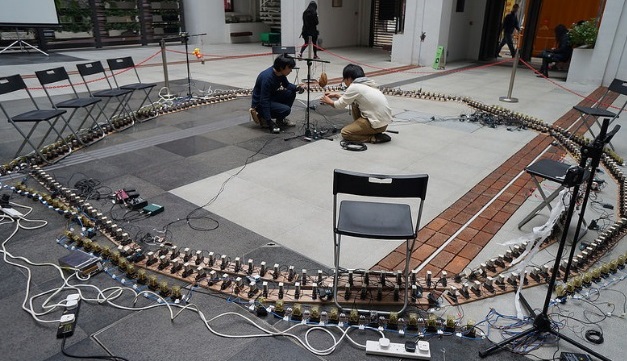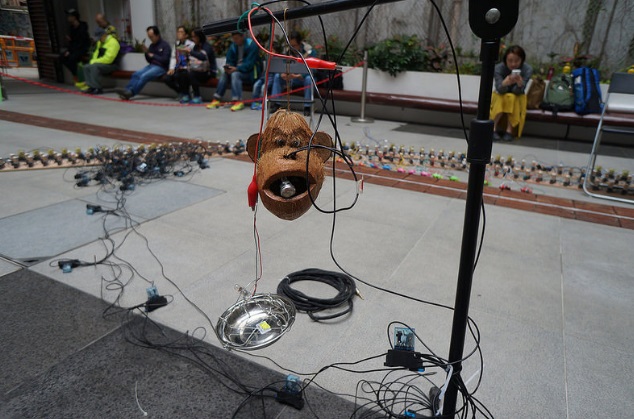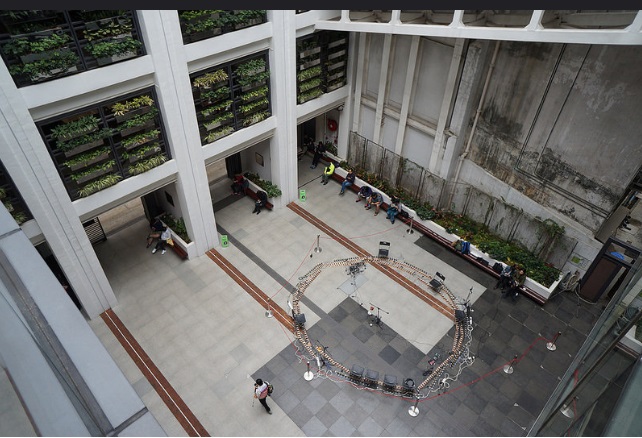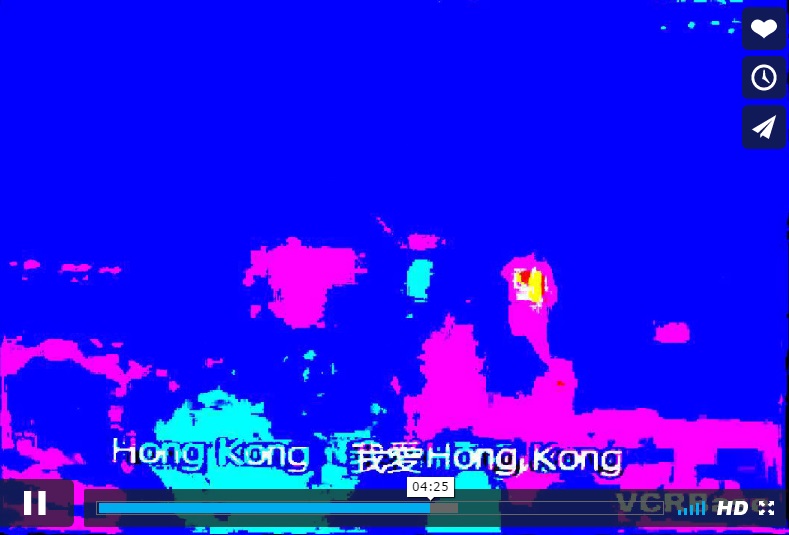藝評
weighing sound in space: Wong Chun-hoi and Alex Yiu
楊陽 (Yang YEUNG)
at 5:00pm on 18th May 2017





Captions:
1. – 3. Wong Chun Hoi, Hardworking Circuit #1.3 / 王鎮海,《勤力電路#1.3》
4. – 5. Alex Yiu, This is My Home / 姚少龍,這是我家
Photo source: Website of Contemporary Musiking Hong Kong
(原文以英文發表,評論王鎮海及姚少龍的作品「聲音下寨 #29 第二部/ #31」。)
At the courtyard of Comix Homebase, a circle of relay switches plugged into multiple sockets laid on the ground around a dozen of chairs. They set up a boundary visitors had to cross to have an experience yet to show itself. Wong Chun-hoi called each switch a ‘dumb unit’ for being simple and low-powered, but able to bring signals of light, sound and other gadgets into operation.
The first relay switch was activated when Wong, sitting on the ground in the middle of the circle, pressed the control button as if holding a joystick. The switches began what Wong called their ‘hard work’, which sequentially activated small toys interjecting the circular line of switches: a glove clinging unperturbed onto a twisted clothes hanger, a palm-sized chimpanzee on a swing, a line of finger-size plastic gold fishes... Their trembling mocked the weight and tediousness of their source of power–hundreds of excessive dumb units. The final point of the circuit was a small and controlled combustion in a coconut shell suspended in front of Wong’s face. Off the fire went, and the circuit released a laugh at its own destruction.
Alex Yiu’s performance carried a steadier and more even rhythm. He began with one cassette recorder and player. Holding it in hand, he pressed the Record button and sang a tone. He then put the machine on the ground, pressed Play to playback what he just had recorded. He repeated the same move for around thirty minutes, with variations to the way he hummed the tone. During the process, the audience was free to move around and find their own way of listening. In multiplying his own technologically mediated voice, Yiu lifted the burden the voice conventionally carried in defining the self. How successful this could be, it seems to me, depends largely on how far space was incorporated as a factor into the dispersal and distribution of the voice.
It was not clear if Yiu was interested in this aspect of the materiality of the sound in relation to the repetition and reproduction of his voice. Since the machines are analog in format, hence imitating physical reality rather than being mediated by a humanly devised language like the digital, how this reality could change (by complicating, condensing, overloading, dispersing, etc.) depends on each of his bodily gestures in relation to the physical properties in the space. Without giving some attention to resonances of the repetition of his voice in space, the meaning of the voice hovers indecisively between its conflicting desires to be rendered null while also wanting to be heard as his original voice.
What to hold up and what to destroy are questions guiding both Wong and Yiu’s artistic decisions in the performances. They could be quick on-site decisions that are contingent and instinctive; they could also have long been prepared for. Regardless of how far each individual work accomplishes what it intends, the curatorial choice of juxtaposing the two is productive of a precious occasion to reflect on the capability of sound among other mediums to constitute intimacy in human relations.
Link: Sonic Anchor #29 Part II & #31 Second Coming Series: Wong Chun Hoi & Alex Yiu @ Public Open Space, Comix Home Base
This article was first published on Contemporary Musiking on 15 March 2017.
